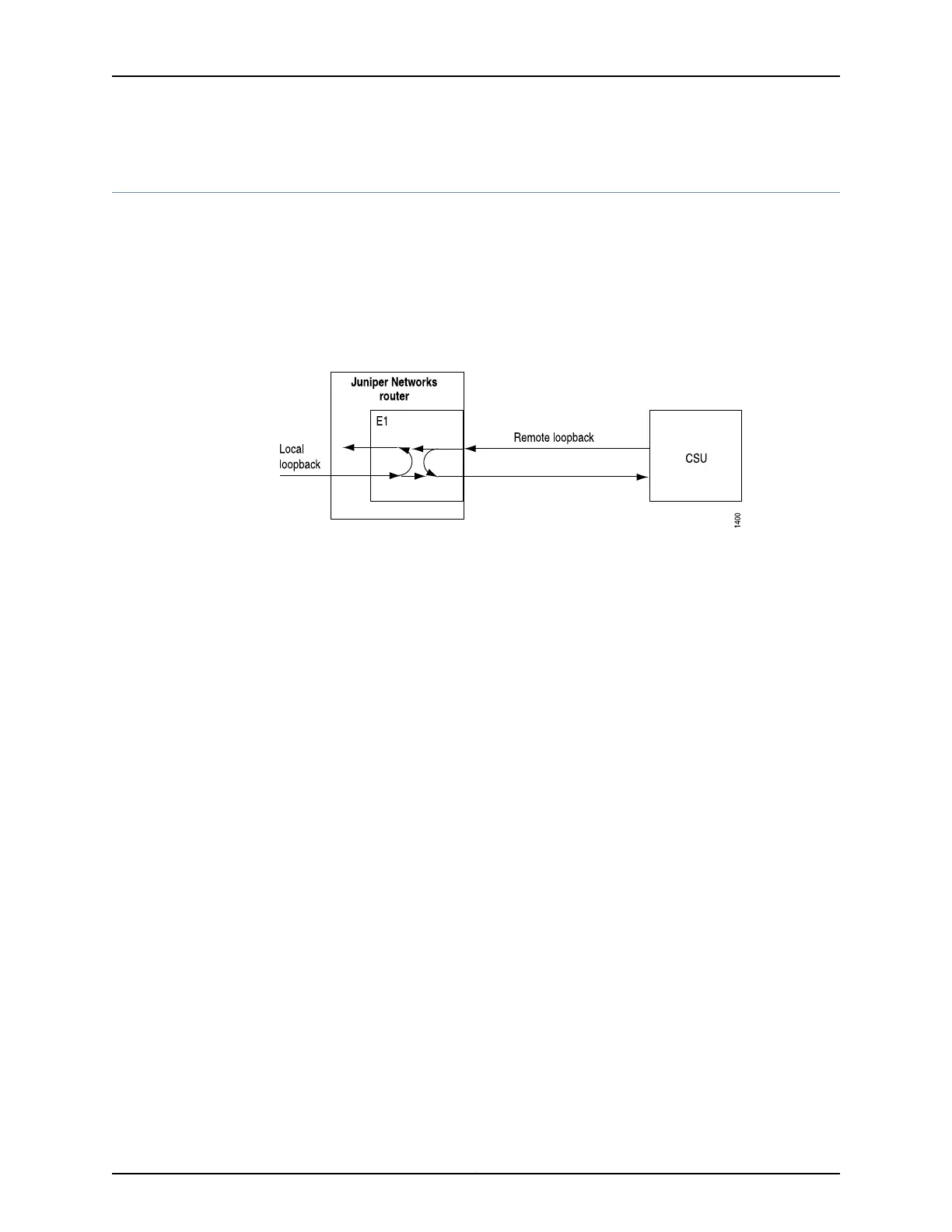Configuring E1 Loopback Capability
You can configure loopback capability between the local E1 interface and the remote
channel service unit (CSU), as shown in Figure 18 on page 167. You can configure the
loopback to be local or remote. With local loopback, the E1 interface can transmit packets
to the CSU, but receives its own transmission back again and ignores data from the CSU.
With remote loopback, packets sent from the CSU are received by the E1 interface,
forwarded if there is a valid route, and immediately retransmitted to the CSU.
Figure 18: Remote and Local E1 Loopback
To exchange BERT patterns between a local router and a remote router, include the
loopback remote statement in the interface configuration at the remote end of the link.
From the local router, you issue the test interface command.
For more information about configuring BERT, see Configuring Interface Diagnostics Tools
to Test the Physical Layer Connections. For more information about using operational
mode commands to test interfaces, see the CLI Explorer.
To configure E1 Loopback capability on an E1 interface:
1. In the configuration mode go to the [edit interfaces interface-name e1-options] hierarchy
level.
[edit]
user@host# edit interfaces interface-name fpc/pic/port e1-options
2. Include the loopback statement. Note that the loopback local statement causes the
interface to loop within the PIC just before the data reaches the transceiver.
[edit interfaces interface-name fpc/pic/port e1-options ]
user@host# set loopback (local | remote)
3. To determine whether a problem is internal or external, loop packets on both the local
and the remote router. Include the no-keepalives and encapsulation cisco-hdlc
statements at the [edit interfaces interface name] hierarchy level. With this
configuration, the link stays up, so you can loop ping packets to a remote router.
[edit interfaces interface-name]
user@host# set no-keepalives
user@host# set encapsulation cisco-hdlc
167Copyright © 2017, Juniper Networks, Inc.
Chapter 5: Configuring E1 and T1 Interfaces
